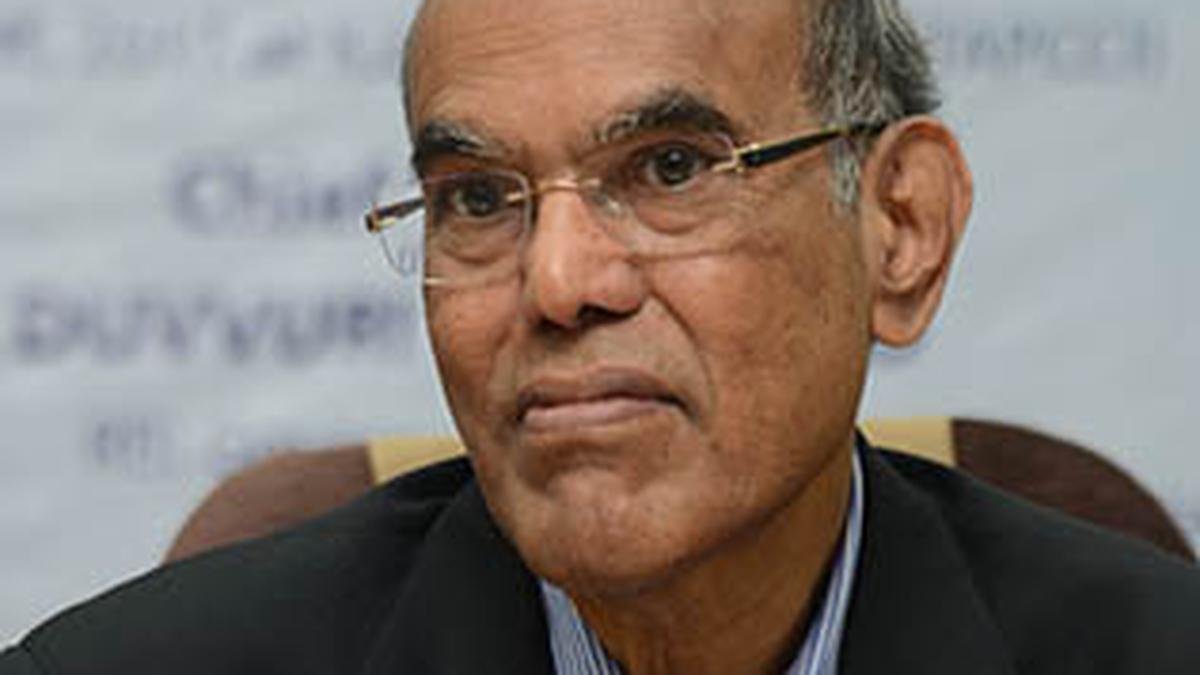No sufficient emphasis on jobs in FY24 Budget, says former RBI governor Subbarao
Former RBI governor D. Subbarao said on Thursday there was no ‘sufficient emphasis’ on jobs in the Budget for 2023-24 and it failed to grapple with the unemployment problem head on, except to believe that growth itself will generate jobs.
Mr. Subbarao noted that the unemployment problem was quite bad even before COVID-19 and had become alarming as a result of the pandemic.
“I was disappointed that there was not sufficient emphasis on jobs [in the Budget for 2023-24] … mere growth will not do; we need job intensive growth,” he told PTI in an interview.
The former RBI governor was asked what was his biggest disappointment with the Budget.
According to Mr. Subbarao, roughly a million people join the labour force every month and India is not able to create even half as many jobs.
“As a result, the unemployment problem is not just growing but is becoming a crisis,” he pointed out.
While noting that there is no single or simple solution to problem as big and complex as unemployment, Mr. Subbarao said, “but I was disappointed that the budget failed to grapple with the problem head on except to believe that growth itself will generate jobs.”
Mr. Subbarao pointed out that India would be able to take advantage of demographic dividend only if, “we are able to find productive employment for the burgeoning labour force.” He also said that the biggest takeaways from the FY24 Budget were the government’s emphasis on growth and its commitment to fiscal responsibility contrary to the widely held pre-budget view that the finance minister would go full blast on populist measures because of electoral calculations.
Asked if there were any risks to the projections made in the Budget document, he said, “there are risks both on the revenue and expenditure sides.” Pointing out that on the revenue side, projections had been made on the assumption that nominal GDP would grow at 10.5% and the expected tax buoyancy of 1.2 this year would repeat next year too, he opined that both assumptions seemed optimistic given that both real growth and inflation were expected to soften next year.
“Moreover, the marginal impact of digitisation and formalisation on tax buoyancy might start to taper,” he said.
On the expenditure side, according to Mr. Subbarao, there is a risk that the expected savings in food and fertilizer subsidies may not materialise if the global situation turns adverse and global prices go up.
Also, if rural growth does not pick up rapidly enough, demand for MNREGA may not drop by as much as the budget expects, he observed.
Asked if the government was on track for fiscal consolidation as per the FRBM target, Mr. Subbarao said it was “too soon to pronounce on that.”
“Focussing only on the fiscal deficit will likely mislead us, we need to be watching also the debt-to-GDP ratio,” he added.
Higher borrowings and lower GDP pushed up India’s debt-GDP ratio to 90% during the pandemic year FY21. That ratio has since come down to 83%.
“But it is still above the 73% ratio of pre-COVID and well above the FRBM recommendation of 60%,” the former RBI governor noted.
A higher stock of debt means ever higher interest burden.
Explaining why debt-GDP ratio is important, he pointed out that interest payments were the single largest item of government expenditure and ate up more than 40% of the Centre’s net tax revenue, leaving that much less for spending on growth enhancing sectors like education, health and infrastructure.
On high inflation, Mr. Subbarao said the January retail inflation which printed at 6.5%, up from 5.7% in December, was a ‘nasty surprise’ since the broad consensus was that inflation would begin to soften.
“What is an even bigger concern is that core inflation [stripped of food and fuel] has ticked up from 6.1% to 6.2%,” he said, adding that even as inflation expectations were typically shaped by food and fuel prices, the sticky core inflation, that too in the face of a growth slack, suggests a strong underlying inflation momentum.
According to Mr . Subbarao, what these inflation numbers, read with the recent dollar strengthening, suggest is that RBI’s work is not done yet and it may have to hike rates and tighten liquidity even further.
Emphasising that he did not believe high inflation needed to become the norm in India, he said it was true that India’s growth was largely consumption driven which made the economy inflation prone.
“Unlike most other economies in the world which are demand constrained, India is a uniquely supply constrained economy.
“The more permanent solution to our inflation pressures has to come from easing supply pressures and improving productivity,” he said.
The RBI lowered the consumer price inflation (CPI) forecast to 6.5% for the current fiscal from 6.7%. India’s retail inflation in January was 6.52%.
For all the latest business News Click Here

